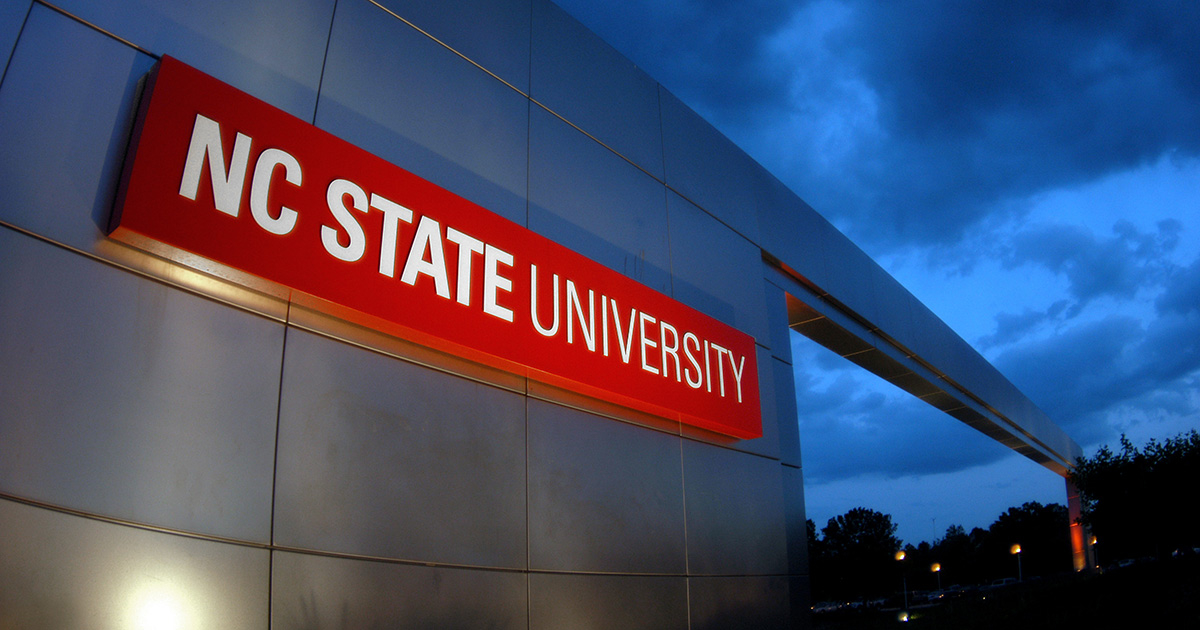‘Decolonizing Science’ Class Tracks COVID’s Impact on Navajo

A class assignment to track COVID-19’s spread among people in the Navajo Nation, the largest Native American tribe in the United States, became an important mission for a group of NC State students last year.
Madhusudan Katti, an associate professor of leadership in public science at NC State, teaches students about historical biases and inequitable practices in science in the class “Decolonizing Science.” Last spring, in response to the COVID-19 pandemic, the class launched a project to track the spread of the virus among the Diné, which is the name the Navajo people call themselves, across multiple states through September. In an article in a progressive publication, Science for the People, they detailed how lack of good data can have real health impacts on people, contributing to disparities for the Navajo and others.
“In this class, we’re exploring how science is conducted, and how it impacts Indigenous people,” Katti said. “That’s the orientation that got the students talking about how the pandemic is impacting people differently and asking if science is addressing people equally or not. Is research on COVID being done in an unbiased way, or is it still perpetuating racial, ethnic or other differences?”
The Abstract spoke with Katti and project collaborator Karletta Chief, an associate professor of environmental science at the University of Arizona and a member of the Navajo Nation, to talk about the project.
TA: Can you explain the concept behind “decolonizing science?”
Katti: The history of western science has been tied with colonial expansion and the industrial revolution. Even though we’d like to think we are in a post-colonial historical time, the way many disciplines train us to think still reflect those colonial legacies. That’s what this class is about: providing students the framework to think critically about how science fits into society, and to what extent it fulfills its promise of benefiting all people versus serving dominant groups and people in power.
TA: Is the end goal to make sure the promise of science benefits all people, or is it also about methodologies in terms of how science is conducted?
Katti: It’s a lot about end-goals, but it’s also methodologies. It’s about how a particular methodology trains students and others to think of science as being disconnected with social and historical processes. In my class, I tell students to step back and look at the context in which research is taking place and think about the power dynamics and why there are certain questions being asked. What are the historical and social contexts and power relations that make some questions more important and fundable?
TA: Where did you get the idea for the article?
Katti: The pandemic disrupted the semester and changed how we were conducting the class. We abandoned the syllabus topics for the remaining weeks after spring break, and instead focused on the pandemic’s impact. It was a breaking event at the moment with immediate relevance to the class.
Our focus to a significant extent was on Indigenous communities and how science fails to serve them very often. We need to know basic demographic information, such as how many people are Navajo? Do we even know who is being affected more or less, and what the community networks are that support them?
TA: How did you track COVID-19 among Navajo people, and what were some of the challenges?
Katti: One of the issues is that the Navajo Nation is spread across multiple states. And the COVID data gathered by state agencies are gathered independently in each state. We got the data from each state. You can download it in a GIS form for some states but broken out at the county level. We focused on the counties that constitute the Navajo Nation.
Chief: Navajo Nation collects daily COVID-19 data, which is reported on a dashboard. I don’t believe all of this data is reported to the state. The Navajo Nation also collects data from adjacent border towns, but does not collect data for Navajos living in cities located much farther from the Navajo Nation. However, more Navajos live off the Navajo Nation than live on the reservation. Recently, the Urban Indian Health Institute released a report card of states collecting COVID-19 data for Native Americans. They also made recommendations for how to better collect COVID-19 data for Native Americans.
TA: What issues can result from undercounting in the census?
Katti: In terms of the census data and how they are collected, often Native Americans are undercounted in part because of issues with simply getting access to remote locations. And ensuring participation hasn’t been a priority in the past. They are making more efforts now.
Things like contact tracing, monitoring whether there are long-term effects, all of those things become difficult if you don’t have basic demographic data.
Chief: Accurate data is critical for advocating, acquiring and directing federal funding for Native American health care, public health services, and messaging – and respects the tribal sovereignty of Native American nations.
TA: What was the most surprising finding?
Katti: The wonderful thing for me was the enthusiasm with which the students decided to pursue this project. The three who became co-authors ended up staying with it through the summer to see it through to publication.
TA: How do you question science without promoting mistrust in science as a whole?
Katti: We talk about it in class – how do we not throw the baby out with the bath water? There are core methods and technologies in science that are useful for everybody. There are ways to use these methodologies to get at real answers. The challenge is to both criticize science’s role in perpetuating injustice and develop ways to push science to be more inclusive of, and responsive to, colonized, Indigenous and oppressed people.
- Categories: